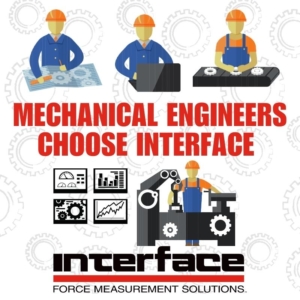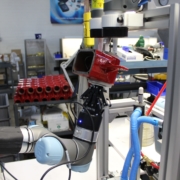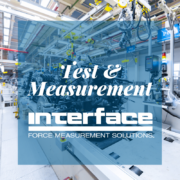Why Mechanical Engineers Choose Interface Solutions
 Mechanical engineers play a crucial role in the design, development, and maintenance of mechanical systems that are integral to modern society and industries. They apply tenets of physics, materials science, and engineering to design, test and analyze, fabricate, and maintain mechanical systems in various industries, including automotive, aerospace, energy, robotics, and manufacturing.
Mechanical engineers play a crucial role in the design, development, and maintenance of mechanical systems that are integral to modern society and industries. They apply tenets of physics, materials science, and engineering to design, test and analyze, fabricate, and maintain mechanical systems in various industries, including automotive, aerospace, energy, robotics, and manufacturing.
Frequently, mechanical engineers use Interface force measurement devices to gather data, analyze performance, and ensure the safety and reliability of mechanical systems. Force measurement technologies help them to quantify the magnitude and direction of forces acting on objects or structures.
Mechanical engineers are active in the research and development of modern technologies and innovations, from small components to large industrial machines. This vital role is typically involved in the selection of materials, manufacturing processes, and quality control to ensure that mechanical systems are safe, dependable, efficient, and cost-effective.
Interface’s quality and accuracy of load cells make them a preferred engineering solution for various use cases. The range of products are used for multiple testing and design applications. The most common products selected by mechanical engineers include:
- Compression load cells for weighing systems, hydraulic and pneumatic systems, and material testing.
- Tension load cells for crane and hoist systems, conveyor systems, and load testing.
- Beam load cells for platform scales, conveyor belt scales, and force measurement in small spaces.
- Shear beam load cells for truck scales, tank weighing systems, and industrial process control.
- Load pins as replacement pins for existing mechanical load-bearing components, such as pins in a hinge, shackle, or bearing. Load pins are commonly used in applications such as cranes, lifts, and heavy machinery.
Engineers use sensors to determine the forces acting on different components or subsystems within a larger system, such as an engine, gearbox, or suspension system, during operation. This information can be used to verify that components are operating within their design limits, identify potential failure points, and optimize performance.
Force measurement devices are used by mechanical engineers in quality control processes to ensure that mechanical systems meet design specifications and performance requirements by performing tests during the manufacturing process, such as checking the tension in bolts, verifying the strength of welds, or measuring the force required for assembly or disassembly of components.
Mechanical engineers use impact force sensors to measure the forces experienced by a vehicle during crash testing, or fatigue testing machines to apply cyclic loads to components or structures to simulate real-world conditions. They participate in the design, development, and optimization of renewable energy systems such as solar power, wind power, hydropower, and geothermal power. Read Interface Solutions for Growing Green Energy.
Mechanical engineers are at the forefront of advancements in robotics and automation, including designing and developing autonomous vehicles, drones, robotic manufacturing systems, and automated processes for industries such as automotive, aerospace, and manufacturing. Advancements in materials science is a key role for many mechanical engineers. As well, these types of engineers play a crucial role in advancing the field of biomechanics and developing medical devices.
IoT and smart systems that integrate mechanical components with sensors, actuators, and control systems to create intelligent and connected systems are a result of the work of mechanical engineers. This includes developing smart buildings, smart appliances, smart transportation systems, and other IoT-enabled devices. Read Interface Sensor Technologies Enables IoT Capabilities
Mechanical engineers use force measurement devices to perform tests and experiments to determine the forces experienced by mechanical systems. Load cells help them to quantify the loads on structural components, such as beams, columns, or joints, to understand their performance under different conditions.
ADDITIONAL RESOURCES
Electrical Engineers Choose Interface Sensor Technologies
Interface Celebrates Engineers
Interface Solutions for Production Line Engineers
Interface Solutions for Material Testing Engineers
Quality Engineers Require Accurate Force Measurement Solutions
Why Product Design Engineers Choose Interface
Why Civil Engineers Prefer Interface Products
Performance Structural Loading App Note
Interface OEM Solutions Process








